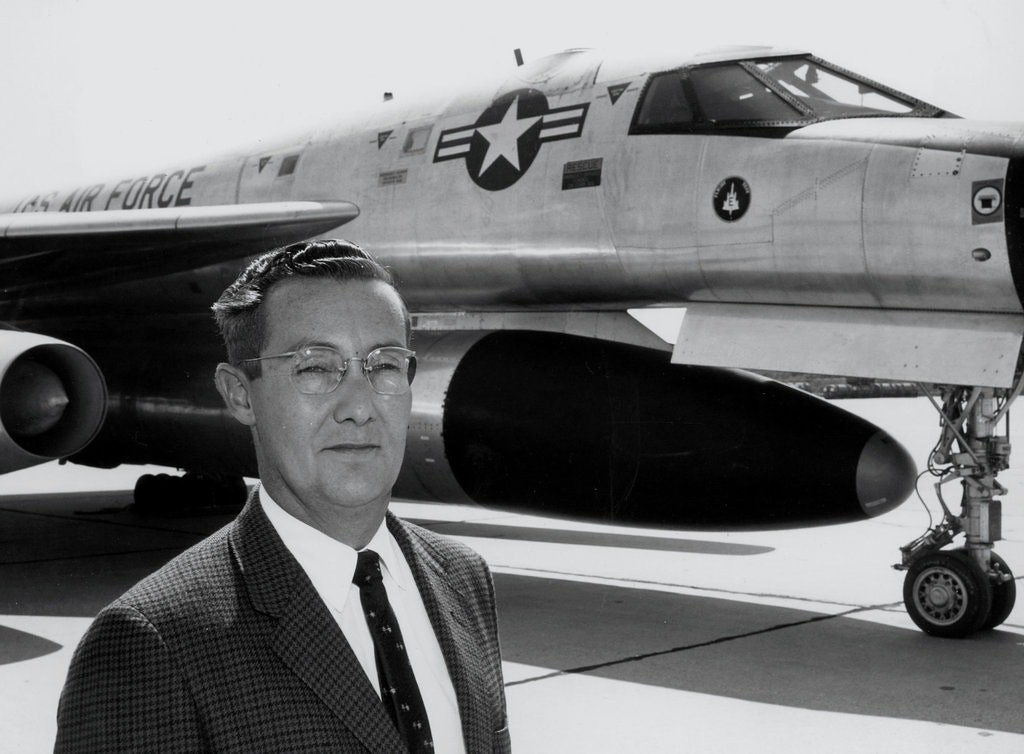
ќписание: Transferred to the companyТs main aircraft factory in Fort Worth, he honed the wing of the B-24 УLiberator,Ф the most-produced American military aircraft. When Convair moved on to the B-36 УPeacemaker,Ф Mr. Widmer presided over wind-tunnel tests. The B-36 went on to become the Air ForceТs largest bomber ever and a strategic stalwart in the 1950s. But it experienced repeated problems, prompting Stuart Symington, secretary of the Air Force, to pay a visit to Fort Worth, as The Dallas Morning News recounted the episode in 1997. After being lobbied by Mr. Widmer, Mr. Symington decided that the program should continue and nervously phoned his decision to Defense Secretary James Forrestal. Mr. Symington then asked Mr. Widmer and two Air Force officers to stand and join hands. УIf this damn airplane doesnТt make it,Ф Mr. Symington told them, УweТre going to walk either east or west until our hats float.Ф A decade later, similar mechanical problems dogged the F-111, a medium-range attack plane. For a time Mr. Widmer flew to Washington every Saturday to confer with Defense Secretary Robert S. McNamara about ironing out the flaws, Mr. Chaput said. Mr. Widmer later defied his bosses by secretly pushing ahead on the F-16, a lightweight fighter, even though there seemed to be no market for it, Mr. Chaput said. Mr. Widmer hid prototypes in hangars. Several years later, the Pentagon decided it wanted such a fighter, and General Dynamics, thanks to Mr. WidmerТs surreptitious efforts, was ready. Having been initially threatened with dismissal for insubordination, Mr. Widmer was instead promoted to vice president for science and engineering for all of General Dynamics. Among his later projects was the Tomahawk cruise missile, which was used extensively in the Persian Gulf war and the Iraq war, and a more fuel-efficient engine for automobiles that carmakers declined to buy. In addition to his daughter, Mr. Widmer is survived by his wife of 65 years, the former Jeanette Billing; his son, Robert; three grandchildren; and two great-grandchildren. Mr. Widmer often worked on highly classified projects, none more secret than his proposed spy plane УFishФ (the letters stood for First Invisible Super Hustler). In a 1999 television interview, Mr. Widmer said an early concept for the plane was to build it in the shape of a disc, a statement that has since reverberated on U.F.O. Web sites. Some of the stealth technology found its way into later airplanes. Mr. Widmer was so valuable to the government that for years the C.I.A. positioned agents in parked cars at each end of the Fort Worth street where he and his family lived, his son said. Mr. Widmer himself told of being instructed to keep a low profile Ч to make airline reservations under a fake name and to meet agents in half-finished buildings. The ultrasecret projects he worked on were called black projects. УIТm talking about the extreme black,Ф Mr. Widmer said. УI have lived the extreme black.Ф
Tags:
ѕоиск и фотоизображени€ предоставлены компанией Flickr с помощью сервиса Flickr API согласно ѕравилам пользовани€ сайтом Flick.com и его сервисами. √рафические изображени€ €вл€ютс€ публичными, размещЄнными их авторами в свободный доступ (Public) и физически расположены на серверах Flickr. ¬се права на фотографии принадлежат их авторам согласно пользовательскому соглашению сервиса Flickr.com и охран€ютс€ законами, регулирующими авторские права.